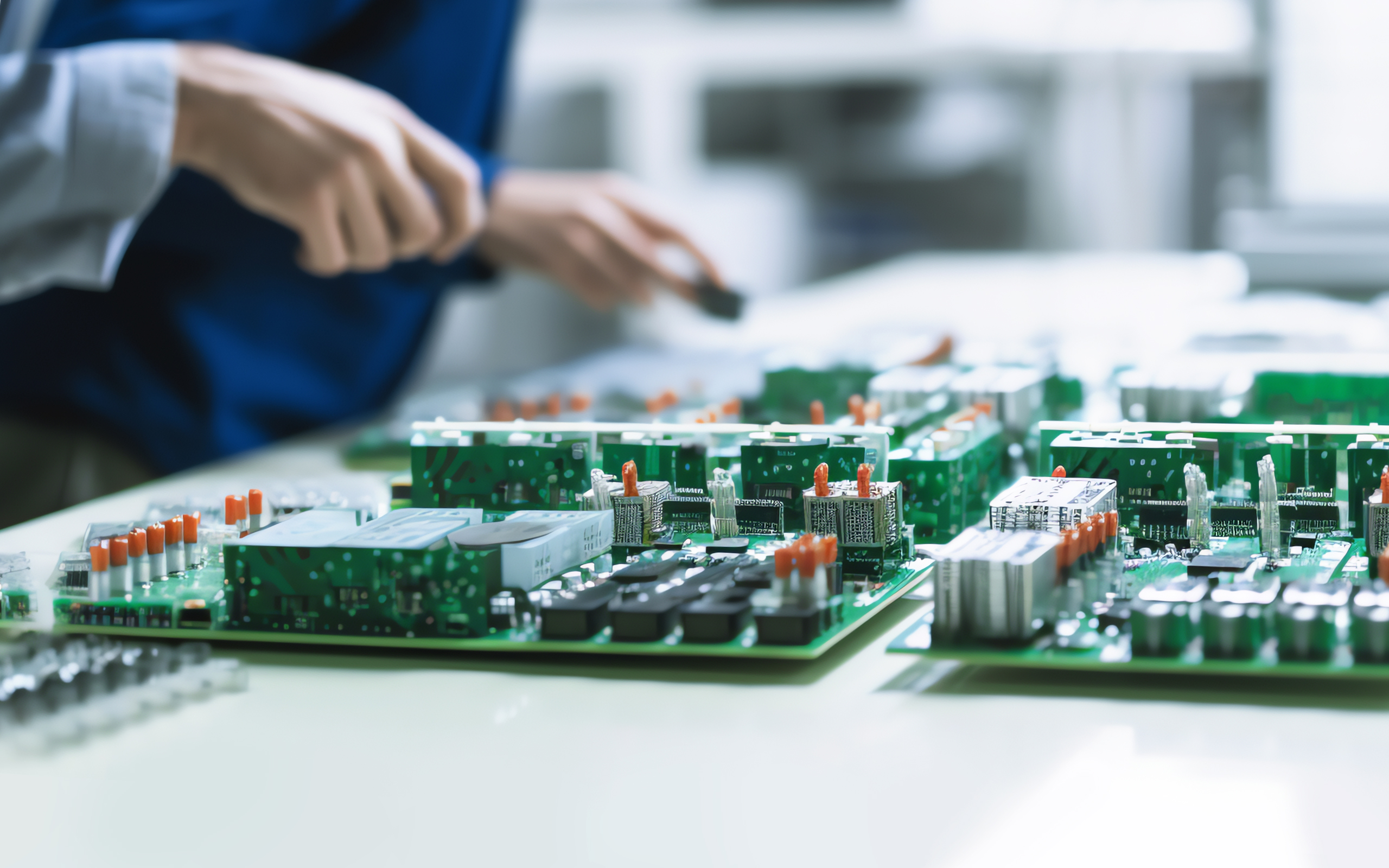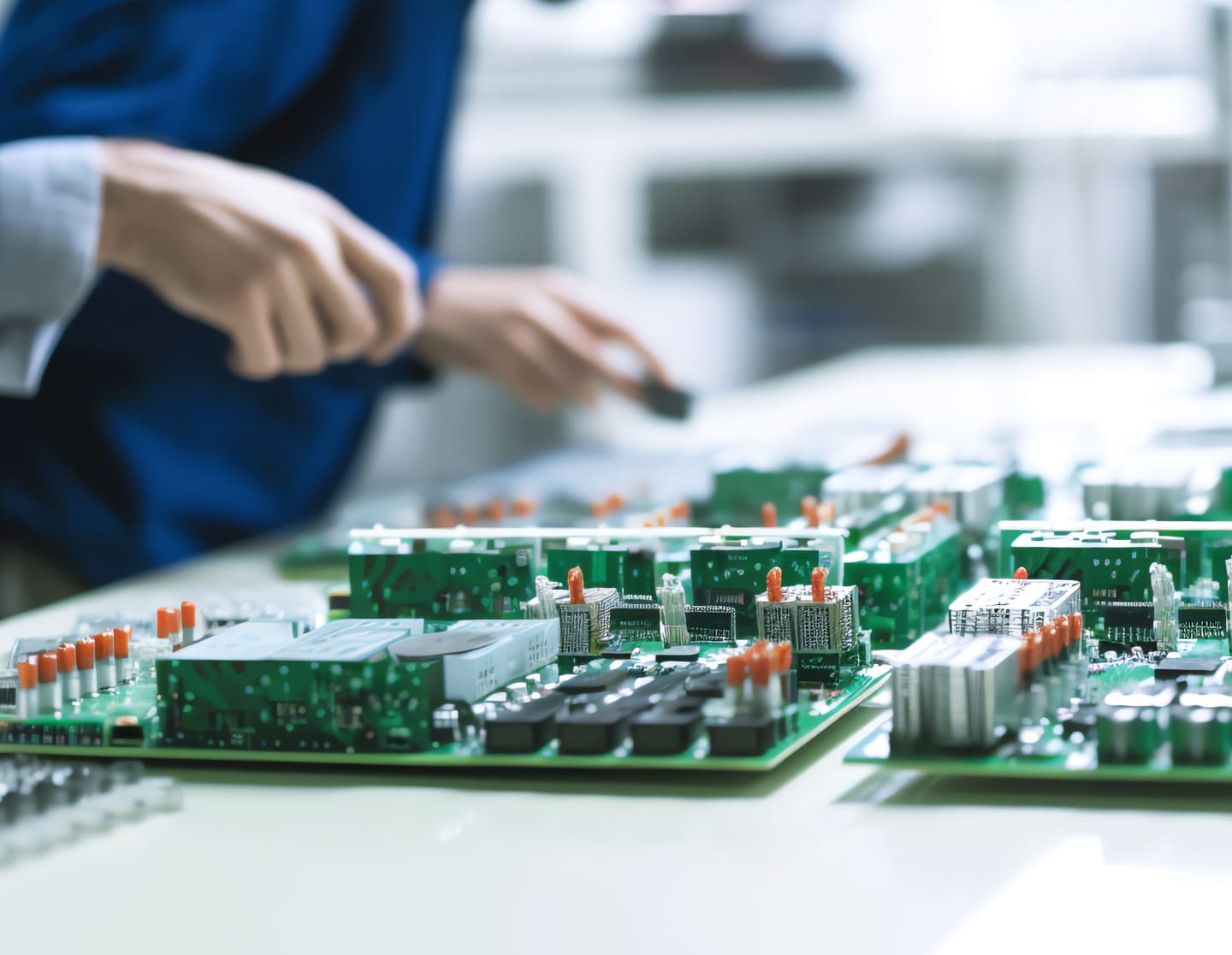Foreword
We come across embedded software daily - when making a coffee, driving to work, or traveling on holidays. Thus, it’s only natural that the demand for products that incorporate embedded systems, from simple digital thermostats to self-driving cars, is incredibly high.
Despite its ubiquitous adoption, embedded software development requires a thorough understanding of both hardware and software engineering. So, it’s quite a complicated area of programming knowledge that might be hard to come by. Luckily, SENLA has tons of experience when it comes to embedded software devices, from avionics to small scanner devices.
This way, if you’re looking to create a product that involves embedded software and don’t know where to even start, don’t fret - we are ready to share our knowledge and expertise in this article!
On the spot
Embedded software is specialized programming that controls and manages very particular and limited operations. It's tightly integrated with the hardware it controls.
The term "embedded system" refers to the collection of hardware elements in a device that operates using embedded software. They consist of hardware, interface, and software.
The embedded software itself is divided into firmware, middleware, Operating System and application software.
The industries where embedded software is often used include:
⦿ Consumer electronics
⦿ Industrial applications
⦿ Automotive
⦿ Medical devices
⦿ Aerospace
There are many challenges that you can face when working on embedded software development, including safety and security concerns and the necessity to meet real-time requirements. Thus, you need to know what to expect - accomplish that by reading this article!
What is Embedded Software?
Embedded software is specialized programming that controls and manages very particular and limited operations. Unlike general-purpose computer software that can be easily modified or moved from one machine to another, embedded software is tightly integrated with the hardware it controls and is designed to perform dedicated functions or tasks.
For example, Zoom allows you to have a video call from any kind of device - your laptop, phone, or tablet, and you can easily install it on all of them. At the same time, the technical capabilities of your home security camera that can differentiate between your family and strangers can’t be transferred to any other camera in your house.
As you can see, embedded software is used for products with very specific and somewhat limited functionality. The components that support these functions are united in an embedded system.
Embedded Software vs Embedded Systems
The term "embedded system" refers to the collection of hardware elements in a device that operates using embedded software. This hardware can include components like central processing units, flash memory modules, power supplies, timers, and ports for serial communication.
At the initial stages of device design, decisions are made about what hardware will constitute the embedded system and how it will be configured within the device. Following this, custom embedded software is developed to function solely with this specific hardware setup.
As a result, expertise in both hardware capabilities and software development is essential in the specialized field of embedded software design.
Attributes of Embedded Systems
Despite the wide variety of embedded systems, common beneficial attributes and design principles unify them.
- Firstly, embedded systems are specialized to perform dedicated tasks. They operate based on predefined functions for their entire operational lifespan and are not meant to be reprogrammed or repurposed.
- Secondly, embedded systems are optimized for efficiency. The system's software is designed so that its resource needs do not exceed the hardware's capabilities, and likewise, the hardware is configured just enough to meet the software's minimum requirements.
- Lastly, embedded systems are engineered for high reliability and stability. They are expected to deliver consistent performance and to function dependably for the entire lifetime of the device in which they are installed.
Basic components of an Embedded System
Embedded systems are comprised of three major parts: hardware, embedded software, and the interface, each serving distinct yet interrelated functions.
In terms of hardware, you'll often encounter microcontrollers, which are all-in-one chips containing a CPU, memory, and input/output peripherals. They are typically low-power, cost-effective, and are used in straightforward applications like household appliances and simple robotics.
On the other end of the spectrum are microprocessors, which are more complex and versatile than microcontrollers but also consume more power and cost more. Unlike the latter, they are general-purpose CPUs that often require additional external components like RAM. Microprocessors are usually found in more complicated systems, such as advanced robotics and automotive controls.
Additionally, sensors play a vital role in embedded systems by gathering data from the physical environment, like temperature or pressure, and converting it into electronic signals. These sensors can be either analog or digital and may require specialized circuitry for data interpretation.
The interface of an embedded system can be both user-centric and machine-oriented.
User interfaces allow for human interaction and could range from simple button-based UIs and LED indicators to more complex touchscreen or graphical displays. For instance, a microwave might have a digital display along with buttons, while a smart thermostat may feature a touchscreen.
Machine interfaces enable embedded systems to communicate with other hardware. These can include a variety of digital and analog I/O ports, as well as specialized communication protocols like UART, SPI, and I2C. These interfaces serve as the lifeline in applications such as industrial automation and automotive control systems.
As for the software part of the embedded systems, let’s go a little bit deeper and break down the different layers of software required for such a product to function.
Types of Embedded Software
In the realm of embedded systems, the software stack usually includes different layers that interact with each other to accomplish specific tasks. These layers typically include the firmware, middleware, Operating System (OS), and application software.
Here's a breakdown of each:
Firmware
Firmware is the low-level software that directly interfaces with the hardware components. It is generally stored in read-only memory or flash storage and tightly coupled with the hardware, serving as a foundation for the operating system and other software layers.
Role: The primary role of firmware is to provide the basic functionalities that are required to boot-up the hardware and to provide the abstraction layer on which the OS can run. Once the boot-up sequence is complete, passes control to the operating system.
Operating System (Embedded OS or Real-Time Operating System - RTOS)
An Embedded OS or RTOS is a streamlined version of a full-fledged operating system designed to provide minimal services that are necessary for running embedded applications.
Role: It performs the functions like task scheduling, interrupt handling, and inter-process communication. It also provides an interface for application software to interact with hardware components without having to control them directly.
Real-Time Operating Systems (RTOS) are often used to manage hardware resources while providing multitasking capabilities. An RTOS is specifically designed to meet real-time requirements and offers services like task scheduling, inter-process communication, and memory management. Popular RTOS examples include FreeRTOS, VxWorks, and RTEMS.
The OS is layered over the firmware, utilizing its hardware initializations and low-level controls. Middleware and applications often run on top of the operating system.
Middleware
Middleware in embedded systems is a layer of software that provides additional services needed by application software, beyond what the operating system offers. This can include things like communication protocols, device drivers, and more.
Role: Middleware simplifies complex actions and makes it easier for application software to perform functions. It acts like a library of functions and services that applications can call.
Middleware acts as a go-between, facilitating interactions between application software and the operating system. It often provides a higher-level programming interface to the developers, abstracting away the complexities related to OS and hardware interactions.
Application Software
This is the software designed to accomplish specific tasks that the embedded system is intended for. It could be anything from controlling an LED display to executing complex calculations for a medical device.
Role: The application software is what drives the primary function of the embedded system. It's usually what the end-user directly interacts with or benefits from.
Application software usually sits at the highest level of the embedded software hierarchy. It interacts with the operating system and hardware through system calls and APIs provided by the OS and middleware.
How These Embedded System Layers Interact
- Initialization: When the embedded system is powered on, the firmware starts up first to initialize the hardware.
- OS Booting: After hardware initialization, the firmware starts the operating system.
- Middleware and Application Launch: Once the OS is up and running, middleware services are initialized, and finally, the application software is launched.
- Run-Time: During operation, the application software will often make use of middleware services to accomplish its tasks. These, in turn, interact with the operating system, which may then interact with the firmware to control hardware components.
- Data Flow: Data can flow both ways; sensor data could be read into an application through a stack of firmware, OS, and middleware layers, and commands to actuate hardware could travel down the same layers.
- Shut Down: When the system is turned off, the application software is terminated first, followed by middleware services and then the OS, which may use firmware routines to safely power down the hardware.
Where is Embedded Software Used?
Consumer Electronics
Embedded software plays an integral role in consumer electronics, enabling these devices to perform their designated tasks while offering a seamless experience to users. Some examples include smartphones and tablets, home appliances, and drones used for video shooting.
In smartphones, embedded software powers everything from apps and firmware that manage connectivity, battery charging, and camera functionality to the operating system (e.g., Android, iOS).
Embedded software in home appliances manages functions like temperature regulation, wash cycles, timers, and energy-saving modes. Advanced refrigerators might even have touch displays and connectivity features managed by embedded software.
In consumer drones, embedded software is responsible for navigation, stabilization, camera control, and remote operations.
Industrial Applications
Embedded software in industrial applications drives automation, improving efficiency, and enabling sophisticated functionalities in equipment and systems.
For example, embedded software controls the machinery in factories and plants, empowering automated assembly lines, quality control mechanisms, and real-time monitoring of equipment. This not only boosts efficiency but also ensures that products meet the desired quality standards.
Another way embedded software is used in manufacturing is safety systems. In industries where dangerous processes are involved, embedded systems manage safety equipment like emergency shutdown, fire suppression, and gas leak detectors, ensuring rapid response to any threats.
Automotive
Embedded software has become an integral part of modern automobiles, transforming them from mere transportation vehicles into advanced, intelligent machines. Its applications in the automotive sector are vast and varied.
Almost every modern car has an ECU (Engine Control Unit) that uses embedded software to optimize engine performance, fuel efficiency, and emissions. It adjusts the motor’s operations based on inputs from various sensors, like oxygen or temperature ones.
Moreover, embedded software powers the multimedia and navigation systems in cars, providing drivers and passengers with entertainment, connectivity to smartphones, navigation assistance, and internet services.
Medical Devices
The medical industry makes wide use of embedded software development, incorporating it in many products from hearing aids to surgical robots. Such devices have become essential to treating patients.
Can you imagine healthcare without devices like heart rate, blood pressure, and respiratory rate monitors? They rely on embedded software to continuously track patient metrics and provide real-time feedback on a wearer’s condition.
Moreover, devices like ventilators or CPAP machines use embedded software to control airflow, pressure, and oxygen levels tailored to individual patient needs.
Aerospace
In aerospace, embedded software ensures the proper functioning, safety, and efficiency of both aircraft and spacecraft. Given the criticality of aerospace applications — where failures can lead to catastrophic outcomes — the embedded systems used must meet exceptionally high standards for reliability, robustness, and performance.
For example, flight control systems are the "brains" behind the aircraft's maneuverability. Embedded software interprets input from pilots and sensors, sending commands to control surfaces like ailerons, elevators, and rudders, ensuring stable and controlled flight.
Embedded software also powers navigation and communication systems, radar, sonar, and other essential avionic components.
Want to Explore the World of Embedded Software?
Join the journey through the intricacies of embedded software and its impact on today's tech

Types of Embedded Software Development Tools
Embedded software development involves a variety of tools designed to facilitate its different stages, from engineering to debugging and testing. Here are some of them:
- Integrated Development Environments (IDEs): Provide an all-in-one place for writing, editing, compiling, and debugging code.
- Compilers and Assemblers: Convert high-level programming languages into machine code suitable for the target embedded system.
- Debuggers: Help developers identify and fix errors in the code by stepping through code execution, inspecting variables, and setting breakpoints.
- Simulators and Emulators: The former simulate the behavior of embedded systems for testing without requiring actual hardware. The latter mimics the hardware behavior more closely.
- Version Control Systems: Manage multiple versions of code, making it easier to collaborate and keep track of changes.
- Static Analysis Tools: Analyze code for potential errors, vulnerabilities, or deviations from engineering standards without executing it.
- Build Automation Tools: Automate the sequence of commands needed to build the final executable.
- Profilers: Analyze the program's run-time behavior to find bottlenecks or inefficiencies.
- Flash Programming Tools: Transfer compiled code into the flash memory of the embedded device.
- Logic Analyzers and Oscilloscopes: Hardware tools used for low-level debugging and analysis of digital and analog signals.
These tools can be tailored for specific hardware, programming languages, or project requirements and are often used in combination.
Embedded Software Development Challenges
Embedded software development, especially in the context of the IoT ecosystem, presents its unique set of challenges.
Resource Constraints: Embedded systems often operate with limited hardware resources. These constraints can be in terms of processing power, memory, or storage. Designing efficient software that maximizes the capabilities of such hardware, without exceeding its limits, requires meticulous planning and optimization. The balance of providing rich features without overburdening the system is crucial.
Real-time Requirements: Many embedded systems have stringent real-time demands. Whether it's a pacemaker that needs to provide timely electrical pulses to a heart or an anti-lock braking system in a car that must respond immediately to changes in wheel speed, latency can't be tolerated. Meeting these real-time requirements while ensuring reliability is a very demanding aspect of embedded software development.
Security Concerns: Given that embedded software is intimately tied to specific devices, which might be controlled via mobile applications or interconnected in the IoT landscape, security becomes paramount. Vulnerabilities in embedded systems can lead to unauthorized data access or, worse, control over the device's operations. Addressing security not only at the software level but also in terms of device connectivity and interaction is also vital.
Safety Concerns: Beyond the typical functionality and reliability concerns, safety is a pivotal aspect of many embedded systems. Devices that operate in critical environments or have the potential to impact human lives directly, like medical equipment or automotive controls, have no room for error. Ensuring the software's absolute reliability and incorporating failsafe mechanisms are of utmost importance.
Maintenance and Updates: Unlike regular software applications that can be frequently updated with relative ease, updating embedded software can be more complex. Devices might be located in remote or hard-to-reach locations, or they might be critical systems where downtime isn't an option. Designing hardware that allows for seamless updates without disrupting its core functionality is a nuanced challenge.
Embed Expertise Into Your Software
In light of all these challenges, if you’re venturing into embedded software, you need to prioritize a comprehensive and standardized approach to development.
You can ensure it by partnering with SENLA, we have years of experience in embedded software development and a 99% return rate for our Clients! Our staff are ready to provide their unique expertise in both hardware and software development.

